For some reason I thought it would be fun to gather all the Italian-made western DVDs and tapes I could lay my hands on, and watch them in the order they were made. An interesting experiment, which maybe I could turn into a book, or a long article on the development of one of the most peculiar and popular cinematic sub-genres.
Some 200-odd spaghetti westerns later, the experiment is complete, but I am not sure what I have learned from it. Spaghetti westerns are violent, sexist, homophobic, intermittently racist, sometimes funny, most often boring and repetitive - like all westerns, or films generally.
Yet I still love the spaghetti western, for its anarchic politics, for its surrealism, for its stoic heroes and diabolical villains, and for its many macabre murders and massacres. Here, then, follow my Top 10 Italian Western Deaths.
1 & 2 For a Few Dollars More
Sergio Leone's second western (his first was a remake of Kurosawa's samurai film, Yojimbo) features the most horrible deaths of all. Both happen off-screen. It's early in the film, and we're getting to know the principal villain, El Indio (played by the wonderful communist actor Gian Maria Volontè - blacklisted till Leone made him a star again). Escaping from prison, Indio kills his cell-mate, numerous guards and the warden, but doesn't really establish himself as the Most Diabolical Western Villain of All Time until the following scene.
This takes place in an old church. Indio and his gang of outlaws have caught up with one Tomaso (played by Spanish actor Lorenzo Robledo), who turned Indio over to the law a couple of years ago. Indio remarks that the amount of time he spent in prison is the age of Tomaso's young child: "You took the reward money and used it to start a family." El Indio wants to kill Tomaso in a duel, so, in order to give Tomaso more of an incentive, he decides to do something really nasty to him. He orders his men to take his enemy's wife and baby outside. Two shots ring out.
If this were a Hollywood film of the period, mother and child would not be killed. Such things didn't happen in American films: the shots would have been fired in the air, the baby would be safe. Not in For a Few Dollars More, where Tomaso weeps because he knows his family is dead. Here is the hideous genius of Leone and the other masters of the Italian western: they weren't bound by a self-imposed censorship regime, known as the Hays Code. Unlike American westerns, spaghettis could include mercy killings, prolonged scenes of sadistic cruelty, and the murders of whole families in order to provoke revenge. And so they did.
3 Django
Sergio Corbucci was Leone's friend and rival. His first westerns were uninspiring. In the wake of For a Few Dollars More, he directed a truly remarkable one: Django. Much emulated (there were at least 50 sequels), Django is a truly original and demented film. The hero, played by Franco Nero, is a shell-shocked veteran of the civil war. He has no horse, and drags a coffin through fields of mud. Inside the coffin is a machine gun that he hopes to trade for gold. He fetches up in a ghost town dominated by two rival gangs: Mexican bandidos and southern racists.
Of the two sides, the Confederates are the worse. They run a protection racket in the town's only business, a brothel. The collector of the protection money is a protestant priest, the black-cloaked Brother Jonathan (Gino Pernice). It's Brother Jonathan's demise that earned Django trouble with the censor, and a worldwide reputation. Jonathan is caught by the Mexicans, who accuse him of being a spy. To make their point more clearly, the Mexican bandit chief cuts off the preacher's ear ... and makes him eat it. This is truly bizarre, utterly unexpected. And then they shoot him! Talk about over-egging the pudding. Corbucci was a hard-line leftist, and had no time for priests or pacifists, who are frequently murdered in his western films. But the death of the obnoxious pastor Jonathan is one of the high points of spaghetti history.
4 Requiescant
A fine, crazy western by the prolific and talented Carlo Lizzani, Requiescant has as its hero a Mexican killer-priest (played by the Uruguyan actor Lou Castell) who prays for the souls of his victims. His adversary is a white racist, Fergusson (an American, Marc Damon).The film's best moment comes when Requiescant (for that is his name) recovers his lost memory, and runs through the desert graveyard where his family was massacred, uprooting their rib cages, skulls and bones. Fergusson is memorably effete and manic, murdering his wife and dallying with the houseboys. In the final showdown, wounded, he begs the hero to let him die like a gentleman. "I don't know how a gentleman dies," Requiescant replies. He shoots Fergusson several times, after which a large church bell falls and crushes him.
5 Quién Sabe?
Quién Sabe? - also known as A Bullet for the General - is one of a number of spaghetti westerns set in Mexico during the Revolution. Leone's Duck, You Sucker! is set in this period, as are two or three of Corbucci's westerns. But Quién Sabe? - directed by Damiano Damiani - is by far the best. It is a time of liberation, yet all of its characters are trapped. El Chucho, the revolutionary peasant played by Gian Maria Volontè, is imprisoned by his own vanity and stupidity; Bill Tate, the gringo assassin portrayed by Lou Castell, is trapped by his lack of understanding and his obsessive love for Chucho.
The whole messed-up situation is visible in one scene, early on, when the revolutionaries stop a military train carrying arms. How to do this? Simple: capture an army captain and crucify him on the railroad tracks. The train, under the command of a lowly sergeant, won't be able to proceed unless the captain orders it to do so, crushing him in the process. This he won't do.
So the train is pinned down and Chucho's guerrillas are able to decimate its guards. By the time the order is given to move the train forward - killing the captain - the battle is already lost.
6 The Big Silence
Corbucci found himself in an interesting quandary. When he made films he didn't care about - such as Minnesota Clay with Cameron Mitchell, or feeble comedy-westerns such as Ringo and His Golden Pistol, aka Johnny Oro - the films were picked up by American studios and distributed around the world. When he made a film he liked, such as Django, it got limited distribution or was banned.
Nevertheless, incensed by the deaths of Malcolm X and Che Guevara, Corbucci embarked on a new, anti-authoritarian western with a mute hero called, yes, Silence (the French actor Jean-Louis Trintignant) set in the snow. The Big Silence is his masterpiece: a great, pessimistic, bitter western by a director who had once loved, and now hated, westerns. The film features many cruel deaths, none more awful than that of the hero himself.
Earlier in the movie, Silence - the mute, killer-of-bounty-killers - is jumped by the villains, who stick his hand into a burning brazier. Now he can no longer use his gun. But, when the innocent farmer-renegades are captured by the villainous banker's mercenaries, and their leader, Loco (Klaus Kinski) challenged him to a duel, Silence is obliged to respond.
The death of Silence - shot in the most cowardly and offhand manner, by subsidiary villains, through the saloon windows - is one of the saddest moments in any spaghetti western. It confirms Corbucci's pessimistic genius. And - thus annoying the American studio which had acquired the rights - The Big Silence remained unseen for many years.
7 Once Upon a Time in the West
Leone's art western features many memorable deaths. As in For a Few Dollars More, an entire family is slaughtered - simply to prove the villainy of Henry Fonda's bad guy, Frank. There is also an unforgettable death-by-flashback, in which the hero witnesses his brother's lynching. But for the jaded enthusiast, the most remarkable demise is that of Morton, the crippled railroad magnate. Throughout this long, angst-ridden film, Morton, writhing in physical agony, has survived due to his determination to reach the Pacific Ocean. This is why he's hired Fonda's character, the killer Frank, "To remove small obstacles from the track" - so that Morton may see the sea.
But Morton mixes his meetings, and attempts to have Frank killed. Frank returns to the train to settle their account, but finds only a host of corpses ... and the dying Mr Morton (Gabriele Ferzetti) scrabbling in the brackish, trackside ditch. Ennio Morricone adds to the irony with a delicate piano score; Leone's sound design includes waves, crashing on the Pacific shore that Morton will never see.
8 Day of Anger
This is a modest western by one of Leone's assistants, Tonino Valerii. It pairs Lee Van Cleef, the venerable American character actor, with Giuliano Gemma, sexiest and most muscular of all Italian leading men. Van Cleef's character trains Gemma's to be a gunfighter. A predictable scenario ensues. But the film has two high points: a manic cameo by a recently-arrived Canadian actor, Al Mulock (who sadly fell out of a window during the filming of Once Upon a Time in the West) and a great showdown between Van Cleef and veteran Italian stuntman, Benito Stefanelli.
Stefanelli plays a self-assured, somewhat theatrical bounty hunter who's after the gunfighter played by Lee Van Cleef. Their gunfight - with rifles, aboard galloping horses - is simply splendid: a moment of epic drama (which ends badly for Stefanelli's character) in a mediocre film.
9 Don't Touch the White Woman!
A French western directed by an Italian, Marco Ferreri, and starring a Buñuelian repertory cast including Marcello Mastroianni, Michel Piccoli, and Catherine Deneuve. This is the story of the battle of Little Big Horn, in which General Custer fields the US cavalry against the working-class citizenry of Les Halles. Shot during the destruction of the famous market, the film draws a parallel between Custer's genocidal mission and the 60s urban planners' loathing for the communities they were determined to "regenerate". It's all insane, all over the top, but very well done, and mysteriously unknown, given its outrageousness, its substantial budget and its all-star cast. Deneuve plays a simpering southern belle, flawlessly clad in pristine white, who has the hots for Custer (Mastroianni). Her death - an arrow through the throat as she professes banal love for Le Général - is notable slice of spaghetti savagery.
10 Django Kill
Django Kill belongs with the complete works of Buñuel and David Cronenberg's Shivers in the awesome armoire of surrealist cinema. Its director, Giulio Questi, didn't like westerns; when, at the height of the spaghetti boom, a producer friend asked him if he had any western scripts, Questi wrote a fantasy based on his own experiences as a teenage anti-fascist resistance fighter during the second world war. Unlike any other war film, or any other cowboy film, Django Kill - which the director prefers to call If You Live, Shoot! - is a catalogue of murder, hypocrisy, and perversion.
There are no good characters in the film: the worst of those present is one Hagerman, sometimes called the Alderman - played by Piero Lulli, an Italian who specialised in highly-strung maniacs. Hagerman locks up his wife, insisting she is mad and will burn down the house. Django, the hero, doesn't believe this and lets the woman go. But she is mad, and she does set the house on fire. Returning to find the Hagermans' home ablaze, Django watches as Hagerman races through the flames to the attic, where his gold is stored. But when he opens his strongbox and upends it, he discovers that the gold has melted with the heat of the blaze. Molten gold, one of Middleton's revenge mechanisms in Women Beware Women, pours forth all over his head and hands. Blind and ablaze, Hagerman, covered in melted gold, staggers through his collapsing, burning mansion.
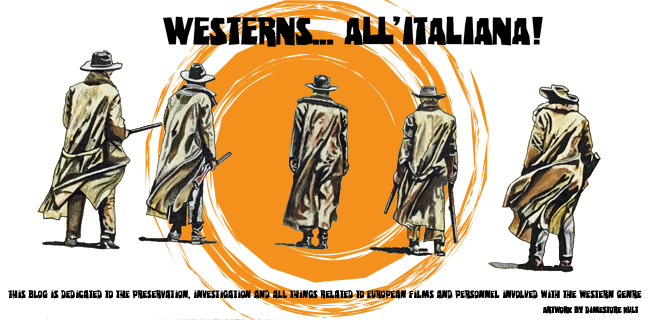
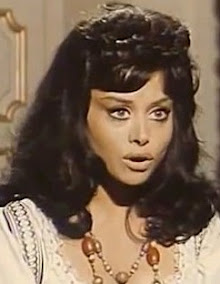
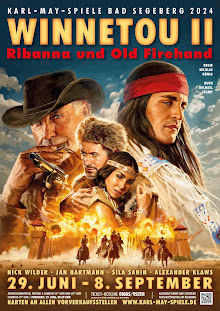



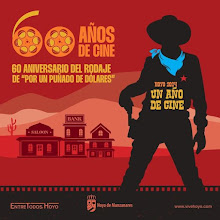

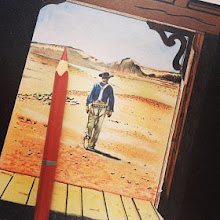

In SE SEI VIVO SPARA, IF YOU LIVE SHOOT, Piero Lulli (who did not specialize in playing highly-strung maniacs) played the leader of the racist bandits. Paco Sanz, a Spanish actor, played Hagerman.
ReplyDeleteThat's a pretty good list; Cox knows his stuff and picks and chooses well. I haven't seen DON'T TOUCH THE WHITE WOMAN,but with all those big name stars in it, it can't be good. I'd add the knife in the forehead from THE BIG GUNDOWN.
ReplyDelete